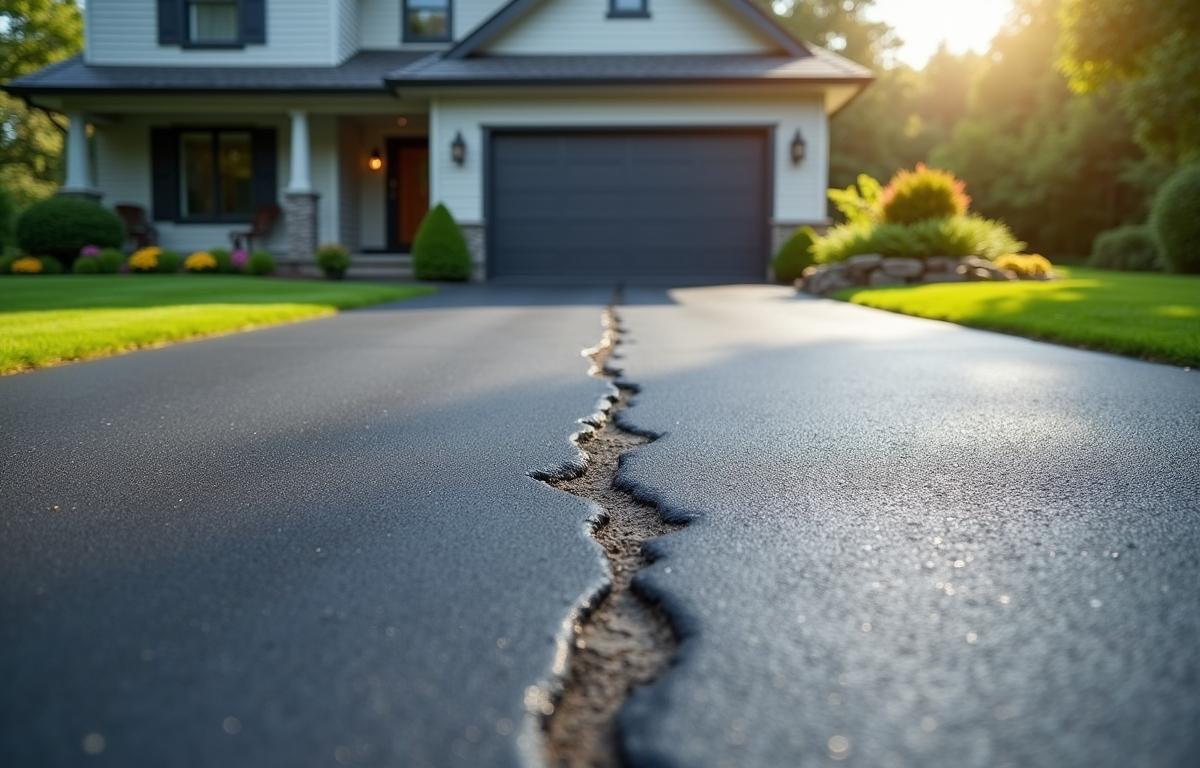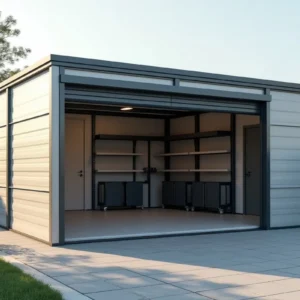A Driveway maintenance guide is essential for preserving a smooth and attractive entrance to your home. Proper upkeep not only enhances curb appeal but helps you avoid costly repairs down the line. Whether you choose asphalt, concrete, pavers, or gravel, the right methods and schedule can extend the lifespan of your surface.
Contents
- 1 Regular Inspection and Prompt Action
- 2 Driveway Sealing Techniques That Extend Lifespan
- 3 Effective Crack Repair Methods and Pothole Solutions
- 4 Surface Cleaning Procedures and Ideal Maintenance Schedule
- 5 Addressing Weather Impact and Winter Care
- 6 Considering Asphalt vs Concrete Driveways and Additional Choices
- 7 Additional Preventive Measures and Best Practices
- 8 Planning for Longevity
Regular Inspection and Prompt Action
One of the easiest ways to keep your driveway in top condition is by inspecting the surface every few months. Look for small cracks, standing water, or signs of crumbling material. Early detection can save you from more involved work later. A simple driveway surface inspection can reveal whether you need immediate repairs or if you can wait until warmer, drier weather.
Issues like minor hairline cracks or shallow pits may seem harmless, but they can expand fast. When moisture freezes and thaws, or when heavy vehicles pass over these weak spots, you risk exacerbating damage. Checking your driveway often and addressing tiny flaws right away is the first step in cost-effective maintenance.
Driveway Sealing Techniques That Extend Lifespan
Sealing is one of the most effective ways to protect your driveway from wear. Regular sealcoating benefits both asphalt and concrete surfaces by defending against water penetration, UV rays, and everyday spills. For asphalt driveway repair, professionals often suggest sealcoating every two to three years. This routine helps maintain a smooth, dark surface that repels oil and prevents further crumbling.
Many homeowners also seek concrete sealing tips to preserve a bright, clean look. A quality sealant shields concrete from deicing salts and harsh weather impact on driveways. If you’re handling DIY driveway maintenance, select a sealer specifically designed for your material and climate conditions. Be sure to clean, patch, and fill cracks before applying any protective layer.
Choosing the Right Sealant
Select your sealant based on your driveway’s surface. Some products work best for asphalt while others cater to concrete. Look for water-based, eco-friendly driveway options if you’re concerned about chemical runoff. High-quality sealers limit the need for frequent reapplication, providing better long-term value.
Effective Crack Repair Methods and Pothole Solutions
Cracks can appear because of shifting soil, repeated freeze-thaw cycles, or simple aging. Quick crack repair methods can prevent future damage and make your driveway safer. Many homeowners apply crack filler techniques using hot or cold filler products. The approach you choose often depends on the size of the cracks and your comfort with specialized tools.
If you’ve neglected small cracks for too long, deeper potholes may develop. Pothole patching usually involves removing loose debris, cleaning the hole thoroughly, and filling it with a sturdy patching compound. For stubborn or extensive damage, professional advice makes a significant difference. Experts can recommend improved materials and techniques for pothole repair tips that offer a lasting fix.
Surface Cleaning Procedures and Ideal Maintenance Schedule
Grime, oil spills, and moss growth can all degrade your driveway. Regular surface cleaning procedures prevent slippery algae buildup, improve the look of your driveway, and preserve the surface integrity. Whether you have asphalt or concrete, using driveway cleaning methods like pressure washing driveways can dislodge embedded dirt. If you’re concerned about the environment, try milder detergents or moss removal techniques that avoid harsh chemicals.
A solid maintenance schedule typically includes an annual deep clean followed by minor touch-ups as needed. Consistency keeps you ahead of larger problems. Seasonal driveway upkeep is also helpful. In autumn, clear leaves and debris to keep moisture from seeping in. In spring, check for any cracks left by icy winter weather.
Dealing With Stubborn Stains
Oil stain removal can be tricky if you’ve let the stain soak in. Try an absorbent material like cat litter or baking soda to draw out fresh spills before washing them away. For set-in stains, specialty degreasers paired with a thorough scrub will help. Clear these messes quickly to keep your driveway looking presentable and safe.
Addressing Weather Impact and Winter Care
Regional climate can have a substantial effect on your driveway’s condition. If you live in a place with severe winters, freezing temperatures and frequent thaws can make cracks worse. Winter driveway care focuses on protecting your surface from both freezing moisture and the chemicals in deicing solutions. Too much salt can corrode concrete and wear down asphalt, so use it sparingly.
When snow arrives, snow removal best practices include gentle shoveling and mindful plowing. If you shovel, avoid scraping the blade directly on the surface. This prevents peeling away sealant layers or creating small, sharp cracks. Choosing a deicing product that won’t harm your driveway is essential. Sand can add traction without causing chemical damage.
Considering Asphalt vs Concrete Driveways and Additional Choices
Many homeowners debate asphalt vs concrete driveways when building or replacing a surface. Asphalt generally costs less and warms up quickly, helping snow melt faster. Concrete, on the other hand, can hold up well in milder climates and often looks brighter. Other options include pavers that allow for creative designs and gravel driveway care that requires leveling and raking.
Driveway drainage solutions should also influence your material choice. Make sure any design slopes away from your garage and foundation. Paver maintenance advice often emphasizes ensuring water can run between the pavers, while concrete or asphalt typically relies on controlled grading for proper drainage. If you have a more complex landscape, landscaping around driveways with shrubs or ground cover can help channel water away.
Expansion Joints and Proper Construction
Driveway expansion joints are especially important for concrete surfaces. These deliberate gaps allow concrete to shift with temperature changes. Proper gaps help control cracks and maintain long-term stability. If you install a new driveway, ensuring it has the right spacing for expansion joints will save you from expensive repairs.
Additional Preventive Measures and Best Practices
Preventive maintenance tips should remain front and center. Simple practices like removing pooling water, filling small cracks immediately, and avoiding extremely heavy loads keep your driveway intact. Regularly sweeping away leaves and debris helps prevent mold or moss growth. If your surface does develop patches of moss, quick moss removal techniques can eliminate slippery spots swiftly.
Driveway upkeep best practices also include looking into UV protection for driveways. Prolonged sun exposure can fade the surface, making it more prone to brittle cracks. A properly applied sealant shields against the sun’s rays, reducing the need for frequent resurfacing techniques.
Budgeting for Repairs
Whether you plan a DIY approach or hire pros, driveway repair cost will factor into your decision. Minor fixes, like hairline crack fillers, have modest price tags. More elaborate repairs, like a full driveway resurfacing guide, can cost significantly more. By addressing damage early, you sidestep the need for full resurfacing or replacement. Consistent inspections and small fixes save money over time.
Planning for Longevity
Even well-built driveways benefit from occasional resurfacing. This is especially true if extensive cracks have formed or the surface shows signs of substantial wear. Resurfacing techniques improve both appearance and structural stability, extending your driveway’s lifespan by several years. Adding a fresh top layer can also resolve any minor drainage issues.
DIY driveway maintenance projects often succeed when you prepare with the right tools. If you’re handling asphalt driveway repair, make sure you have the correct filler type for any cracks. If you’re sealing concrete, pick a reliable sealer that matches local conditions. Small, steady efforts now will reward you with fewer problems later.
Setting a Realistic Timeline
Each driveway material and climate calls for a different timeline. A maintenance schedule tailored to your region ensures no step goes overlooked. Regular checkups, occasional sealcoats, and immediate repairs when needed will pay off in a neat, sturdy driveway that elevates your home’s curb appeal. By taking a proactive approach and choosing driveway materials suited to your environment, you’ll appreciate a more dependable, safer surface for years to come.





